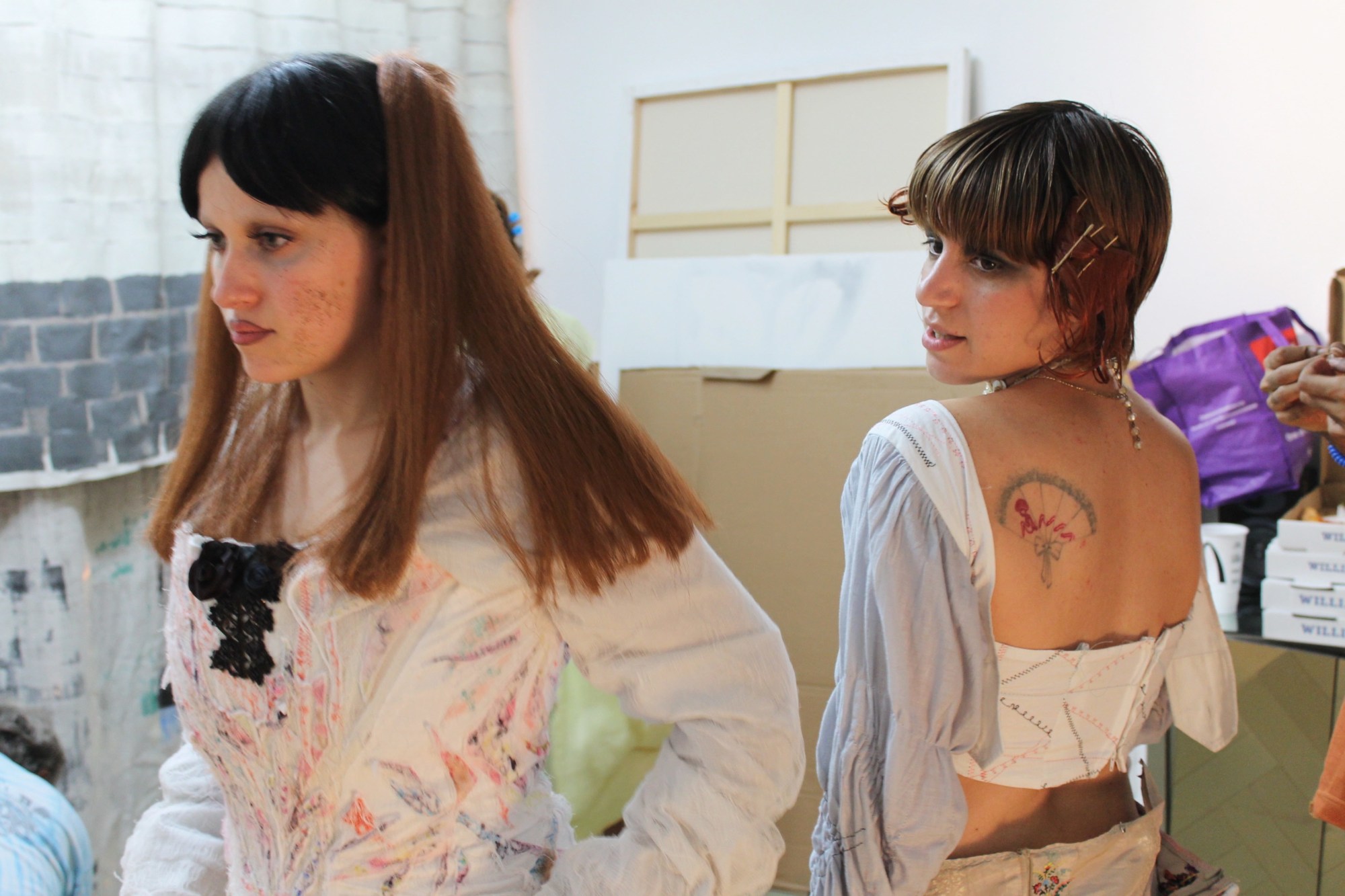Of the fashion designers working in New York today you’d be hard-pressed to find one whose politics are more apparent than Women’s History Museum. The multi-sensory collaboration between artist-designers Amanda McGowan and Rivkah Barringer, Women’s History Museum imagines a crumbling vision of fashion: they burn, shred, slice, and dirty garments, and reconfigure them with such unconventional materials as medical gauze. This practice becomes a platform for discussing and subverting myths of femininity and sexual difference.
Women’s History Museum recently presented “Mew ✙,” its fourth collection, transforming the Lower East Side’s Romeo Gallery into a makeshift doll house, complete with a backdrop painted to resemble a suburban home and a runway molded from fake grass. The performance began with a cut—a pair of scissors stabbed through the front door and the first model snipped herself an exit, leading a procession of otherworldly living dolls across the AstroTurf runway. The collection is a patchwork of exaggerated and conflicting feminine tropes: we see a cat-eared Red Cross nurse, a bloodied handbag swinging from side to side, miniature outfits upon tiny coat hangers, garments ripped and dragging and jutting with adornments.
We caught up with the duo, hot off the heels of a fashion show at the National Gallery of Denmark in Copenhagen, to talk fantasies, collecting dolls, and the meaning behind the name “Women’s History Museum.”
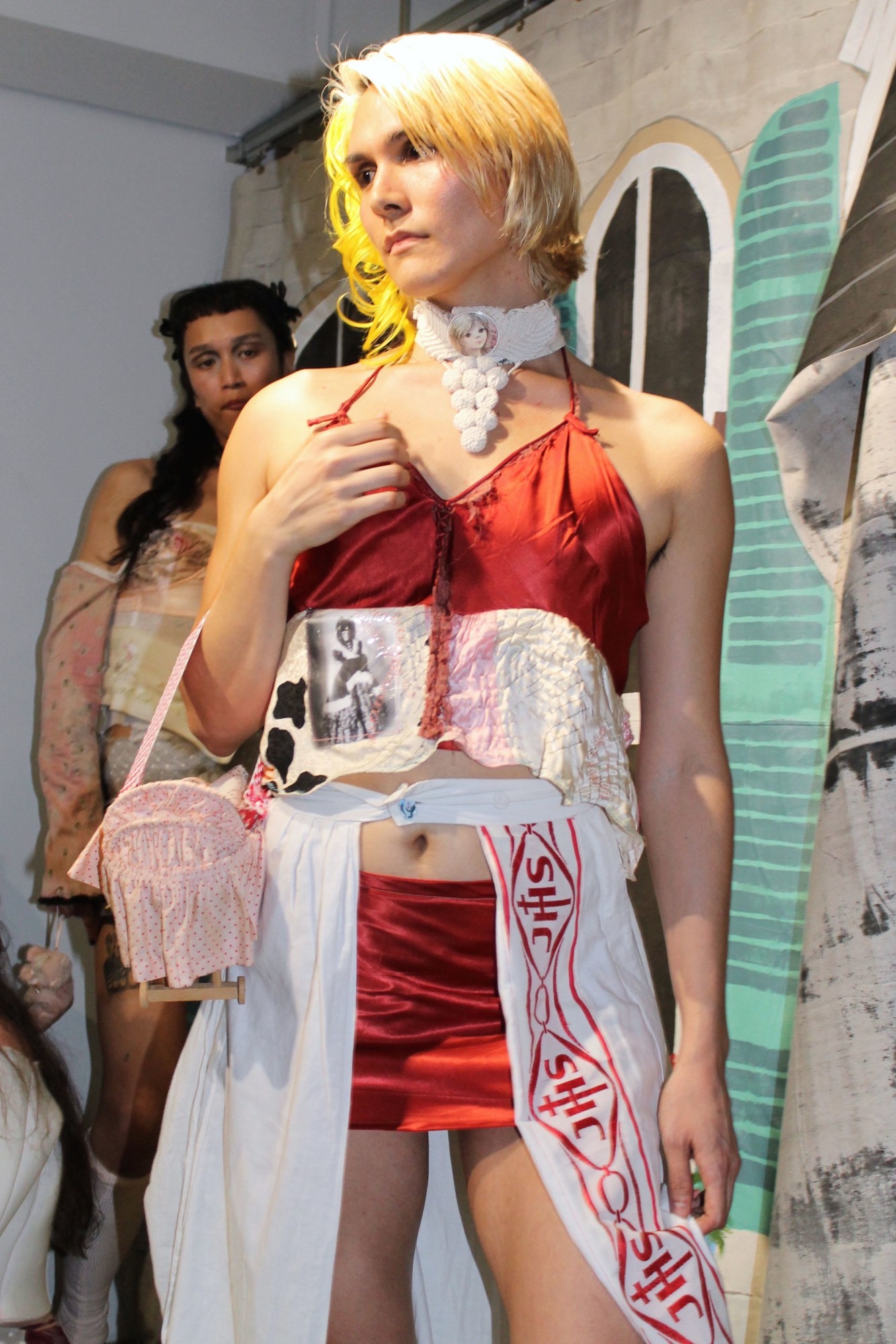
What’s the story behind the name Women’s History Museum?
Rivkah: The name arose as a grandiose joke, but it stuck and makes sense with our goals in regards to the project. We really wanted to make clothes that discuss femininity and present a collapsed vision of fashion as a realm which constructs myths of sexual difference throughout time, but also as a highly expressive practice with potential for subversion and personal freedom. We want to create representations and objects that are missing in fashion history and that we crave, like candy.
Amanda: It’s a way to mock the flimsiness of most institutions and show that alternative ones can exist. Also, fashion and other feminine crafts we’re interested in are often bastardized art forms so it was definitely a way of signaling their validity albeit in a non-serious way since they’re a part of this kind of dysfunctional “museum.”
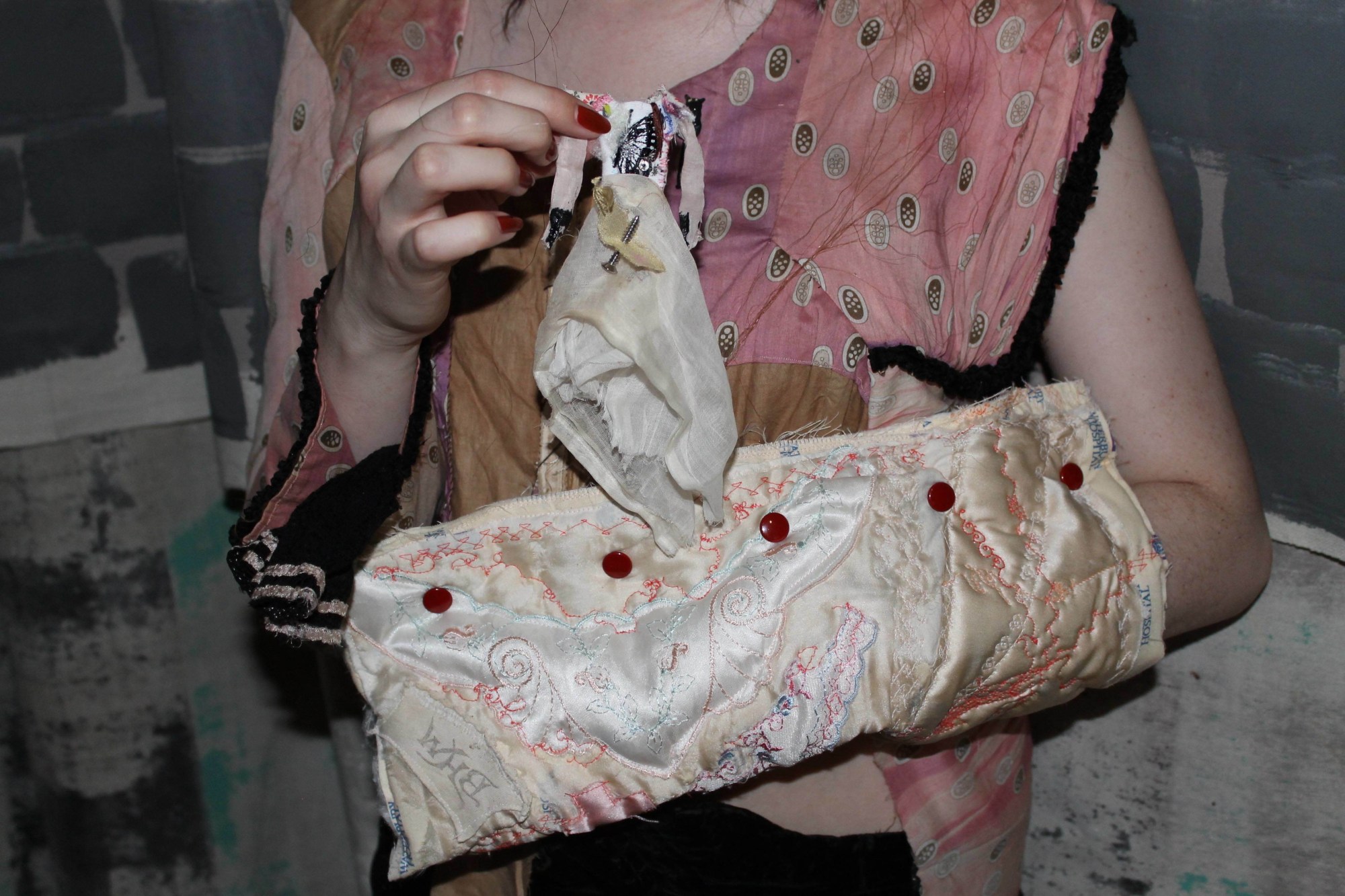
When did you begin making clothing, and how did that become today’s Women’s History Museum?
R: I learned to sew on a machine in high school and made embroidered paper outfits for my little sister and hodgepodge accessories for friends. No one really wore anything I made but I still have them. But Amanda and I met in college and we started working together as Women’s History Museum in 2014.
A: I also learned to sew in high school and would hand sew full hideous outfits out of scraps that I would totally wear now if I still had them. I was always interested in patchwork and collage, and Rivkah had a similar practice and view of the world, so naturally as we got closer we decided we should collaborate in some way.
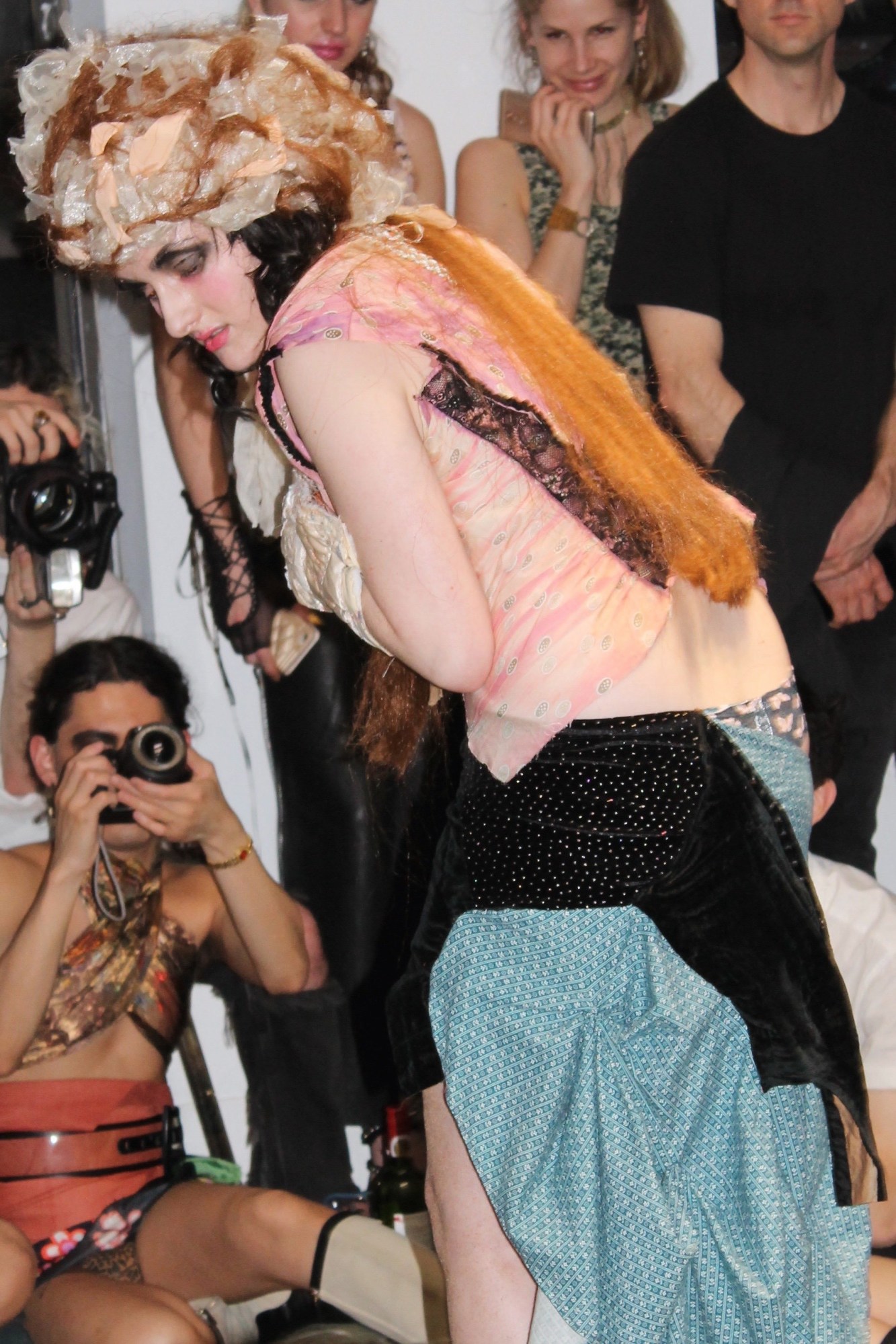
Your work takes a lot of different forms: sculpture, clothing, performance, runway as performance. Do you identify your work by any particular medium?
R: These distinctions don’t exist for us so we just kind of work intuitively. Fashion was our mutual obsession and so we went from there. In college, our work was dismissed as “not art.”
A: I’m interested in many different mediums of making and we both create when we feel excited about a specific idea or project and don’t really concern ourselves with labels for it.
There is always something fantastical about your garments, as well as the spaces you create. Do you feel you get to explore your own fantasies through the creative process? Are there any concepts or stories that you find yourself returning to again and again?
R: Thank you, yes, absolutely. Fantasies both erotic and no, are the manifestation of agency and that’s what makes fashion interesting. To signify dreams on the surface of the body, or to contradict them in the search for personal identity is what holds my interest. We want to make fashion objects that don’t exist, and that are perhaps excessive.
A: I want to make objects and spaces I wish existed. I’m an extremely fantastical person and I’m waiting for the day that we’re all plugged into a computer and can totally control our own embodiments and existences. In the meantime, I love making clothing that allows the person wearing it to become a different character. Personally, I’m very inspired by people that create entire original universes like Brian and Wendy Froud and fae culture in general, animal/human hybrids, living dolls, and erotic medical narratives. But more importantly, I like thinking of the stories of my friends and thinking of what they would be like in some extreme and otherworldly setting.
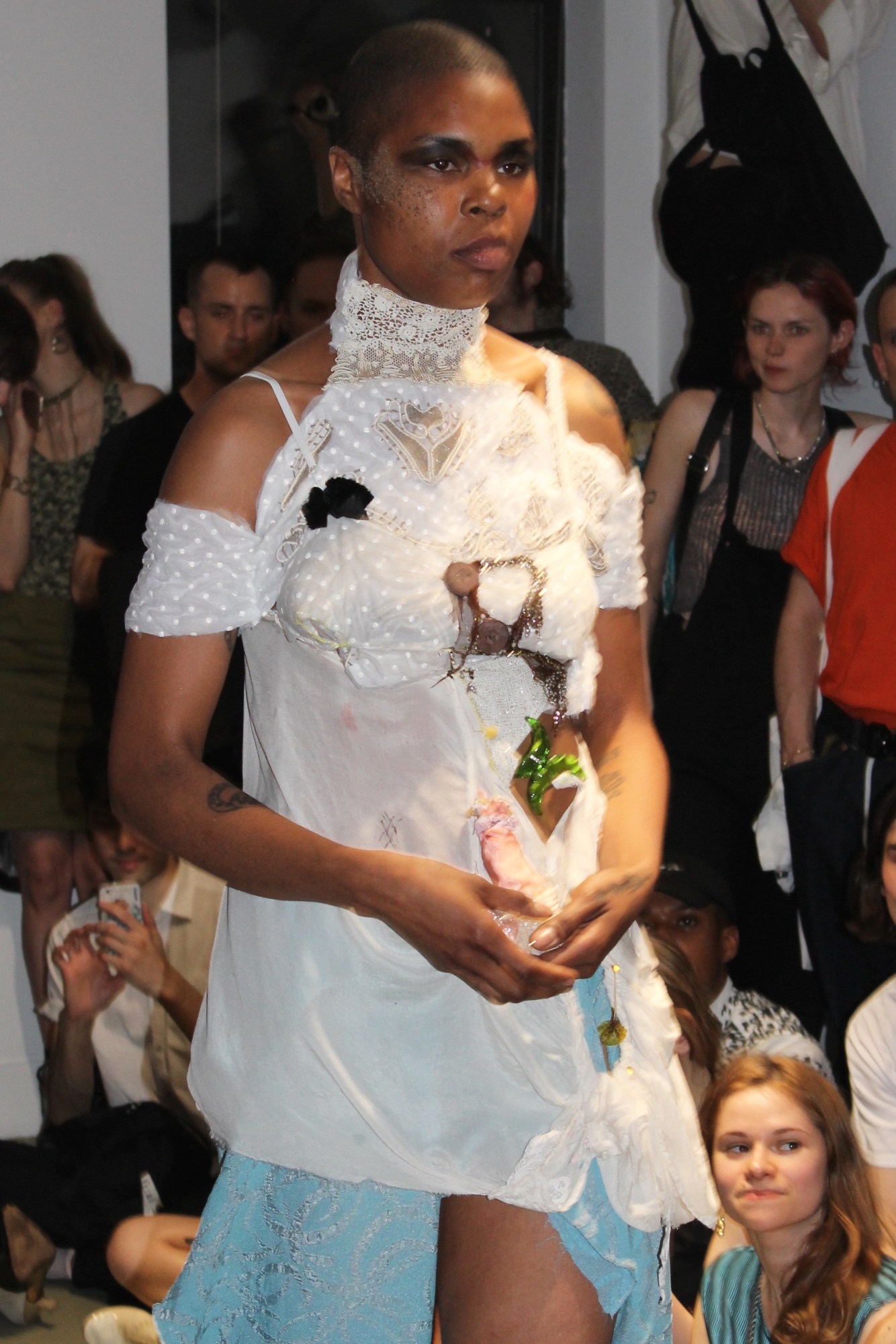
What were some of your references for this collection?
R: We allowed ourselves to be very eclectic with our references for Mew ✙ and pursued whatever visuality we were attracted to at the time, even if the references aren’t direct or coherent. I did a lot of historical research in Empire France/Regency period, as well as subtle changes in dress as the 19th century unfolded. I love the aesthetics of hoarding and brocante-style personal collections as well.
A: We are always thinking of dolls—nothing is more a symbol for a kind of stereotypical and unattainable placid “femininity.” What a good image to subvert and deconstruct. I think my obsession with collecting dolls is in jest, but also a serious commitment to save them from a life of being misunderstood as simple emotional comfort objects, as feminine people are often treated. The idea of an animated and liberated doll was on my mind for this recent show and this doll was very interested in trying many different looks and didn’t want to be limited!
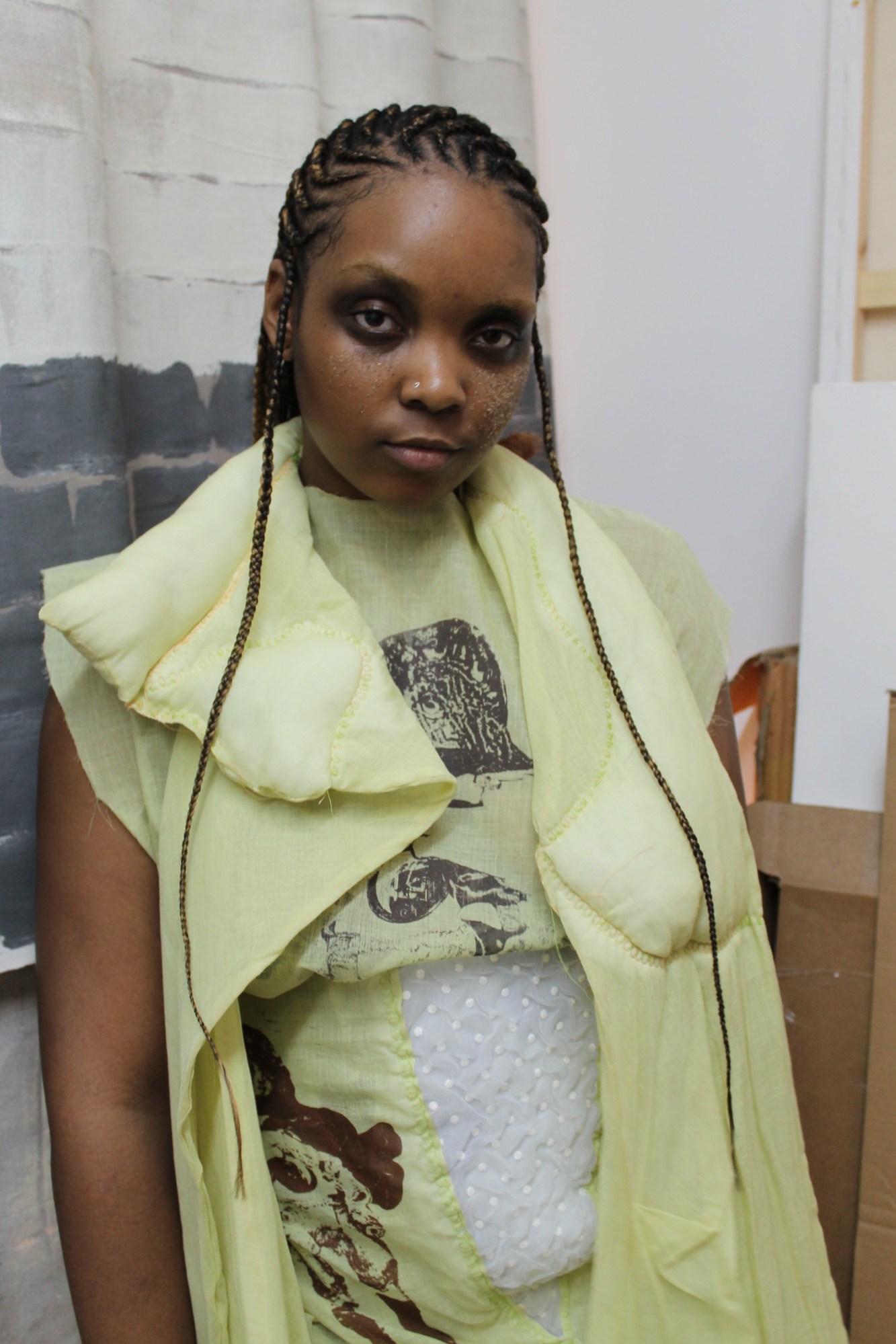
What are some of your methods for distressing and adding to a garment? What materials do you work with, and are there any you’d like to utilize?
R: Makeup, dirt, fire, food, temporary tattoos, embroidery, brooches, pens, slicing with an X-Acto knife. We always want to take the power away from technicians but, at the same time, are excited to explore new craft technologies to produce our visions. Chloe Maratta did the beautiful screen printing for the Fallen Doll dresses in this recent collection.
A: I’m extremely dissatisfied with the materials that are out there in contemporary fabric stores, so we often use vintage materials, repurpose old garments or draw on and disguise newer fabrics. I really liked working with medical gauze, boning and vintage calico prints this season. Constructing a garment is only half of the process, working with and transforming the fabric itself is an equally important part.

Who are some local people that inspire you?
R: Gabriela Rivera-Morales is one of our frequent collaborators. She is an illustrator and maker based in New York and has made shoes for Women’s History Museum’s past two collections. Most of our models are artists themselves and bring so much vibrancy and imagination to our shows. Local style icon Kelley McNutt; Jahmal Golden, who is a poet and curator, has modeled for us; Gogo Graham, the incredible makeup artist and designer also walked in our show this season; the writer Molly Edminster; and so many others.
A: There are so so many! We’d be nothing without the people that inspire and support us. Everyone that Rivkah mentioned plus our doll muse and photographer, Tyler Jones; Keke Hunt, a tattoo artist and musician we featured heavily in the recent show soundtrack; sculptor and original Women’s History Museum model, Ser Serpas; artist Marcelline Mandeng; and Justine Crawford, who’s done the makeup for our past three shows.

What are your plans for the future of Women’s History Museum, and do they involve selling?
R: Yes, we are launching a shop through our website very soon.
A: Continuing to expand the possibilities and depth of our work and trying new things.
Credits
Text Coco Romack
Photography Kelley McNutt
Video Jack Scanlan
